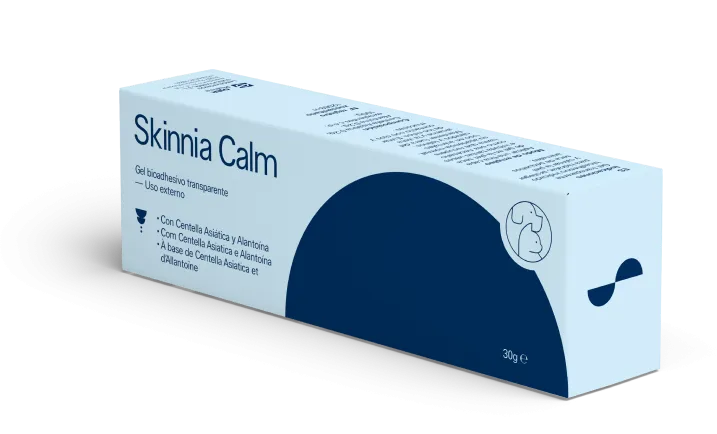PATHOLOGIES WE TREAT
Contact Dermatitis

Introduction
Contact dermatitis is an inflammatory skin reaction that occurs when the skin comes into contact with an irritant or allergen.
This condition can affect both dogs and cats and, while less common than other forms of dermatitis, it can cause significant discomfort and may lead to secondary infections if not properly treated.
Causes
Contact dermatitis in dogs and cats can be caused by:
- Irritants such as detergents, disinfectants, or insecticides.
- Plants, chemically treated grass, and synthetic materials found in collars, bedding, or toys.
- Inappropriate topical products and metals like nickel, which may trigger allergic reactions.
Identifying and eliminating the irritant is crucial for preventing and managing this condition effectively.
Symptoms
The severity of lesions depends on the duration of exposure. Common symptoms include:
- Erythematous areas: Skin with pink to red discoloration.
- Alopecic areas: Hairless patches.
- Pruritus (itching): Ranges from moderate to severe intensity.
- Excoriations and crusts: Resulting from scratching.
- Papules: Small raised bumps, and/or vesicles (small fluid-filled bumps) on the skin.
Diagnosis
Diagnosis is based on the pet’s clinical history, observed symptoms, and any recent changes in habits or environment. It is critical to eliminate suspected irritants and monitor for symptom improvement.
To rule out other conditions, such as atopic dermatitis, parasites, skin infections, or food allergies, veterinarians may isolate the animal in a stainless-steel enclosure for 3-5 days. Improvement during this period confirms the diagnosis.
Treatment
Treatment begins with the identification and removal of the responsible allergen, which is fundamental for a good prognosis. If secondary infections caused by bacteria or Malassezia occur, specific antimicrobial treatments may be prescribed by the veterinarian.
To manage symptoms like pruritus and redness, soothing topical treatments are essential. Products like Skinnia Calm help reduce irritation, inflammation, and promote skin regeneration, significantly improving the pet’s well-being.
Prevention
- Avoid exposure to irritants like detergents, disinfectants, or chemical products.
- Use pet-specific products such as hypoallergenic shampoos and topical treatments.
- Keep the skin hydrated and protected with treatments like Skinnia Calm.
- Check the environment for plants or materials that could trigger reactions.
- Monitor the use of accessories like collars or beds made from safe, non-allergenic materials.
Medleau, L., & Hnilica, K. A. (2017). Small animal dermatology: a color atlas and therapeutic guide. 4th ed. St. Louis, Mo., Saunders Elsevier.
Machicote Goth, G. (2011). Dermatología canina y felina (primera edición). Zaragoza: Servet
Ho, K. K., Campbell, K. L., & Lavergne, S. N. (2015). Contact dermatitis: a comparative and translational review of the literature. Veterinary dermatology, 26(5), 314-e67.

Bioadhesive transparent gel indicated to moisturise, protect and soothe the dry skin of small animals.